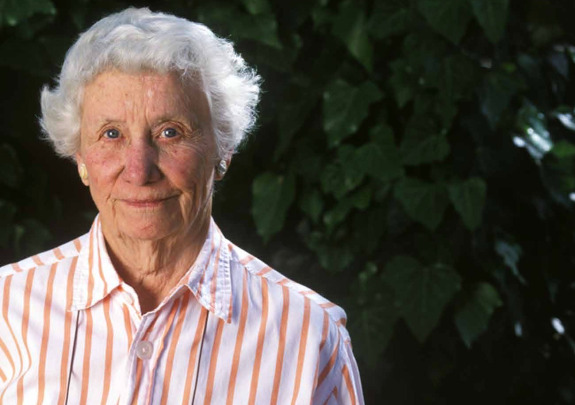
Agnese Nelms Haury (1923 – 2014) was a dedicated philanthropist with a vision for change makers and innovative scholarship. During her life and world travels, she supported many people and organizations working on social justice and the environment. The Haury Program, endowed in 2014, honors Mrs. Haury's dedication to addressing the most pressing issues facing humanity and her lifelong commitment to the region of her birth and long-rime home, the Southwest.
Please also check out this AZPM piece "A Tucson Original: Agnese Haury", produced by Aengus Anderson.
Haury received a BA in history from Bryn Mawr College in 1947. After graduating, she became an editorial assistant with the Woodrow Wilson Foundation, helping to edit the United Nations News and International Conciliation and supporting the work of the Conference Group of Non-governmental Organizations.
In 1954, she began working at the Carnegie Endowment for International Peace as assistant editor of International Conciliation. She traveled to Bolivia, Peru, Ecuador, Libya and Burma, surveying and writing treatises on those countries' economic and social problems and exploring their economic development possibilities. She wrote several reports for the United Nations and edited the 1962 UN Yearbook.
When Haury moved to Tucson in 1965, she helped to process and catalog artifacts recovered from the Snaketown Archaeological Project in Central Arizona. In 1967, she helped research and edit Gunnar Myrdal’s renowned books Asian Drama and The Poverty of Nations. In 1968, she became the editor of the Anthropological Papers of the University of Arizona.
From 1981 through 1990, Haury served as president of the Agnese N. Lindley Foundation (bearing the surname of her second husband, magazine and book editor Denver Lindley). The organization funded work in social and humanitarian challenges, civil and human rights issues, the arts, the environment and scientific research. It also supported journalism, civic affairs and economic advancement in less-developed countries. It’s more than 200 projects included:
- Preserving 100,000+ photos of the El Salvador conflict;
- Launching an Inter-American Environmental Policy Center;
- An initiative to increase the number of Indian groups gaining federal tribal recognition;
- Research on the disappearing Yaqui and Samish languages;
- Grants for an archaeological field school and excavations;
- Scholarships in art conservation;
- Musical commissions;
- Support for tree-ring research and training;
- Analysis of the Convention on Trade in Endangered Species and risks to biodiversity on the US-Mexico border;
- Native seeds preservation;
- Support for the Guardian newspaper;
- An intern program for The Nation magazine and opportunities for young journalists to learn political and social reporting.
In 1990, widowed from her second husband, Agnese married widower Emil W. Haury, with whom she had formed a close friendship in the mid-60s, working under his direction in the Snaketown project.
Emil Haury was head of the University of Arizona (UA) School of Anthropology and director of the Arizona State Museum, avidly interested in dendrochronology (tree-ring dating) and world-renown for his work on the Paleo-Indians of the Southwest.
After her husband's death in 1992, Mrs. Haury established endowments for anthropology graduate students and the Agnese and Emil Haury Fellow in Archaeological Dendrochronology and funded construction of the Agnese and Emil Haury Southwest Native Nations Pottery Vault at the Arizona State Museum.
Her support spanned a wide range of UA and regional initiatives:
- UA programs in public interest law and immigration paralegal training;
- The Court Interpreter Training Institute;
- The UA's Southwest Center, including recruiting prominent writer, conservationist and food activist Gary Nabhan;
- The work of ecologist David Yetman and his TV programs, "The Desert Speaks" and "In the Americas";
- Construction of the Bryant Bannister Tree-Ring Building, opened in 2013, which houses the Laboratory of Tree-Ring Research and its irreplaceable collection of tree-ring specimens from around the world.
In 2014, the University of Arizona Foundation became the recipient of a $50 million bequest from the Haury Estate to establish an endowment in support of scientific and cultural studies rooted in social and environmental justice, with a focus on the American Southwest. The bequest, one of the largest in the University's history, founded the Agnese Nelms Haury Program in Environment and Social Justice.
- Distinguished Citizen Award, University of Arizona Alumni Association, 1983
- Honorary Doctorate of Humane Letters, University of Arizona, 1999
- Victor R. Stoner Award, Arizona Archaeological and Historical Society, 2007
